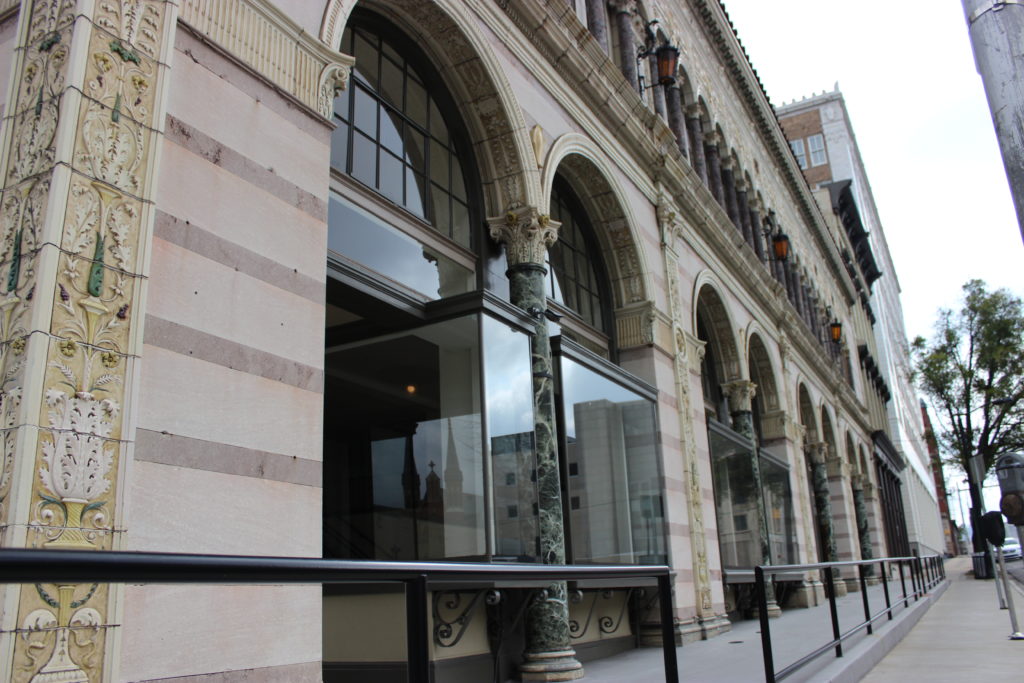
The Historic Tax Credit is responsible for renovating more than 40,000 buildings across the country and attracting more than $131 billion in private revenue, but what if it could do more?
That’s question Alabama Rep. Terri Sewell along with Reps. Earl Blumenauer and Mike Kelly hope to answer by introducing the Historic Tax Credit Growth and Opportunity Act, also known as HR 2825.
The bill would update the credit for the first time in 30 years, making more buildings eligible.
It would also increase the credit from 20 to 30 percent for smaller deals where rehabilitation expenses are less than $3.75 million.
“Historic preservation continues to be the most powerful and effective strategy for revitalization for historic downtowns and neighborhoods,” REV CEO and President David Fleming said about the bill. “The proposed changes make it easier for smaller buildings and investors to improve their neighbors and main streets and raises the value of the credit.”
The expansion would also make it easier for non-profits to use it to open art centers, health centers and other community services, according to the National Trust for Historic Preservation.
The Historic Tax credit was enacted in 1986 and has created more than 2.5 million jobs. Locally, the tax credit played a part in many projects including the Redmont Hotel in 2017, the J.F. Oates Motor Company in 2014, the Avondale Fire Station #10 in 2017 and the Florentine Building in 2015.
“National treasures in Alabama’s 7th District tell the story of our nation’s fight for freedom and equality in the face of injustice,” Rep. Sewell said. “Not only are our historic sites important for history’s sake, they are also a source of sustainable economic growth that have brought jobs and investment to local communities. The Historic Tax Credit Growth and Opportunity Act will help preserve these historic sites and increase economic opportunity in my district.”
Show your support for the Historic Tax Credit Growth and Opportunity Act by visiting here.
Related News
-
Why we say yay to two-way streets
Filed Under: Developer, Downtown Birmingham, Filling Vacant Spaces, Front Page, Transportation, Yaysayers
REV Birmingham is a long-time advocate for making the switch to two-way streets downtown, and this is something recommended by planners studying our downtown for years. In fact, the team that developed the 2004 City Center Master Plan recommended many street changes but noted 4th Avenue North conversion should take place “immediately.” We believe this project is a catalytic moment for Birmingham – but you may find yourself wondering why that is.
-
The Key Tool for Urban Revitalization: Downtown BHM's Business Improvement District
Filed Under: Business-Proving, Developer, Downtown Birmingham, Front Page, Get Involved, Potential-Proving, Why BHM
By the time REV took on BID management in 2018, downtown had a new set of needs from its BID. Downtown Birmingham in the ‘90s had a population mainly of 9 to 5 employees. But the downtown of 2018 had a whole new population of residents and visitors throughout the day and night. We had new opportunities to create positive experiences, inviting them into more downtown businesses and public spaces, and to keep them coming back for more.
-
Introducing the six businesses that call Nextec home
Filed Under: Business-Proving, Developer, Downtown Birmingham, Filling Vacant Spaces, Front Page, Historic Preservation, Potential-Proving, Why BHM
On the corner of 3rd Avenue and 16th Street North, you’ll find Nextec, a redevelopment of the 90-year-old, 65,000-square-foot Edwards Motor Company building (also formerly known as the Sticks ‘N’ Stuff building). With experience in historic renovation, developer Michael Mouron, chairman of Capstone Real Estate Investments, began this civic project in 2021 as a space for business startups to continue their work in the Magic City – a function encouraged by REV Birmingham.